|
|
Post by keen101 (Biolumo / Andrew B.) on Apr 5, 2016 1:07:51 GMT -5
This year i am trialing several Solanum Cheesmaniae and Solanum Galapagense accessions and may use them in breeding projects. This is the year of my big tomato growout, not just for wild tomatoes. And the first year i have grown any tomatoes in several years, but i think it will be a good one. The good news it will be a good growing year. The bad news it will be one heck of a hot, dry, wildfire year!
These are the lines i am most interested in based on the information provided.
Solanum Cheesmaniae:
LA0428 - heavy anthocyanin, exerted stigmas
LA0429 - antho, flowers large, exerted stigmas, visited by carpenter bee
LA0437 - orange, anthocyanin, carpenter bee
Solanum Galapagense:
LA0530 - orange-brown fruits
LA1137 - Aromatic?
LA1408 - only one reported as having RED fruit (cross?)
LA1410 - purple fruit
Some of these i've had good germination, others i've had a hard time. I'm using the 3% bleach method to help the seeds. In my second batch i planted some without the bleach treatment just to see if the tortoise germination myth had any merit. One accession sprouted fine without the bleach treatment, the others did not. I am now resowing those with bleach treatment.
I am out of seed for LA1137, but i have ONE seedling growing, so i guess i will just have to take care of that one plant.
I will try to take some pictures of my seedlings at some point.
|
|
|
|
Post by steev on Apr 5, 2016 1:39:48 GMT -5
Your dedication is noted; best wishes for interesting/successful results.
|
|
|
|
Post by philagardener on Apr 5, 2016 5:31:26 GMT -5
Sounds interesting! We look forward to hearing more about them!
|
|
|
|
Post by gilbert on Apr 5, 2016 16:17:04 GMT -5
I've grown Sara's Galapagos, which was very vigorous and hardy, but the fruit was not impressive; it was not very tasty, and VERY small. I wonder if I could cross it with some other tomatoes and get something better.
|
|
|
|
Post by keen101 (Biolumo / Andrew B.) on Apr 6, 2016 12:04:40 GMT -5
I've grown Sara's Galapagos, which was very vigorous and hardy, but the fruit was not impressive; it was not very tasty, and VERY small. I wonder if I could cross it with some other tomatoes and get something better. I've sprouted some Sara's Galpagos as well. Never tried it before either. It is not a pure galapagos tomato, apparently some sort of hybrid between a wild type and a domestic. Your the first person to say they don't taste good, although many people say the cheesmaniae dont taste remarkable. The Sara's Galapagos supposedly has retained exerted stigmas though. |
|
|
|
Post by gilbert on Apr 6, 2016 12:05:29 GMT -5
I wouldn't say they taste bad, just not as good as, say, black cherry.
|
|
andyb
gardener
  
Posts: 179
|
Post by andyb on Apr 6, 2016 22:34:43 GMT -5
I'm curious. How difficult are the crosses between domesticated wild tomato species? Are there seed viability / sterility issues?
|
|
|
|
Post by keen101 (Biolumo / Andrew B.) on Apr 7, 2016 0:19:34 GMT -5
I'm curious. How difficult are the crosses between domesticated wild tomato species? Are there seed viability / sterility issues? Since i'm not really working with any crosses with the more obscure wild tomatoes i really wouldn't know. My understanding is that the more common ones like Cheesmaniae and Pimpinellifolium cross easily and with no problems. But there are a few others on the forum currently working with some of the other forms. I'm sure they will chime in soon. This post might be interesting though: alanbishop.proboards.com/post/22777alanbishop.proboards.com/post/22777/thread) |
|
|
|
Post by philagardener on Apr 7, 2016 5:33:31 GMT -5
Crosses with between some species work better in one direction (for one female parent), but I haven't tried any myself. This probably is the result of different incompatibility systems (which can be quite complicated) that normally would prevent self-pollination. So you might try crosses in both directions, transferring pollen from each to the other to see which words best.
|
|
andyb
gardener
  
Posts: 179
|
Post by andyb on Apr 9, 2016 22:28:34 GMT -5
Thanks for the information and the link to the old post. That answers my question exactly. It's pretty cool that there are some easy interspecific crosses to be made.
|
|
|
|
Post by DarJones on Apr 10, 2016 1:44:06 GMT -5
That old post is in need of significant updating. The incompatibility between the peruvianum and lycopersicon complexes is based on two disparities. The first has to do with endosperm. Lycopersicon has a large endosperm, Peruvianum has a very small endosperm. There are also several genetic blocks including the S gene for self-sterility. Search on the net a bit and some good articles will show up that describe these limitations.
The Peruvianum group was divided into several new species a few years ago as a result of work by Peralta and Spooner. Here is an updated list though with a huge caution that just because it says it can be done does not mean it will be easy. In most cases where a cross will work, domestic tomato should be used as the female parent. For example, Lycopersicum X Habrochaites can be done with domestic tomato as the female parent but is almost impossible to get a take the other direction.
Including Solanum lycopersicum, there are currently 13 species recognized in Solanum section Lycopersicon. Three of these species—S. cheesmaniae, S. galapagense, and S. pimpinellifolium—are fully cross compatible with domestic tomato. Four more species—S. chmielewskii, S. habrochaites, S. neorickii, and S. pennelli—can be readily crossed with domestic tomato, with some limitations. Five species—S. arcanum, S. chilense, S. corneliomulleri, S. huaylasense, and S. peruvianum—can be crossed with domestic tomato with difficulty and usually require embryo rescue to produce viable plants. The Lycopersicon section has not been fully sampled within wild species in the South American range, so new species may be added in the future.
Solanum section Lycopersicoides and section Juglandifolium are represented by two species each that are considered bridge species genetically intermediate between tomato and non-tuber bearing potato species. S. lycopersicoides can be crossed with domestic tomato and introgression lines have been developed. This species was significant in moving the domestic tomato from separate genus status into the Solanum group because it directly links the tomato into the potato family.
|
|
|
|
Post by keen101 (Biolumo / Andrew B.) on Mar 17, 2017 18:15:47 GMT -5
Ok. Update time. Just seedlings right now, but my test seedlings for this year are getting bigger and are doing well. 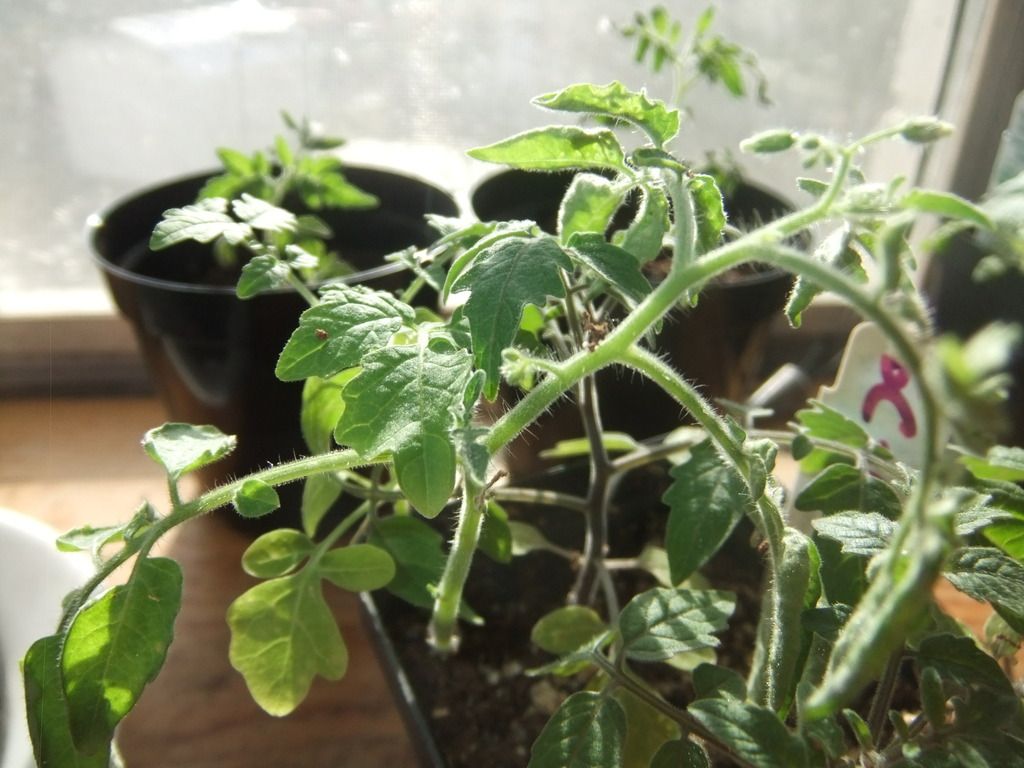 The Solanum cheesmaniae ones show some variation, both in terms of antho stems vs. non-antho stems, but also in smell and what might be disease/bug susceptibility. Still all very interesting though. SC LA0422  There is one tall but more yellowish plant in the S. cheesmaniae batch. This is one of the two that lack antho coloring. This is also the one that smells slightly lemony. I'll be honest in saying that the slight lemony smell slightly bugs me. This is also the plant that is showing bug and/or disease susceptibility on the leaves (might be aphids). But this one is now showing early flowering in the 6th and maybe the 4th node.. so that's interesting. I'm more interested in the antho stem ones, but i wont kill it off. I'll keep watching it. Might be interesting. The others have leaves and smell similar to domestic tomatoes. 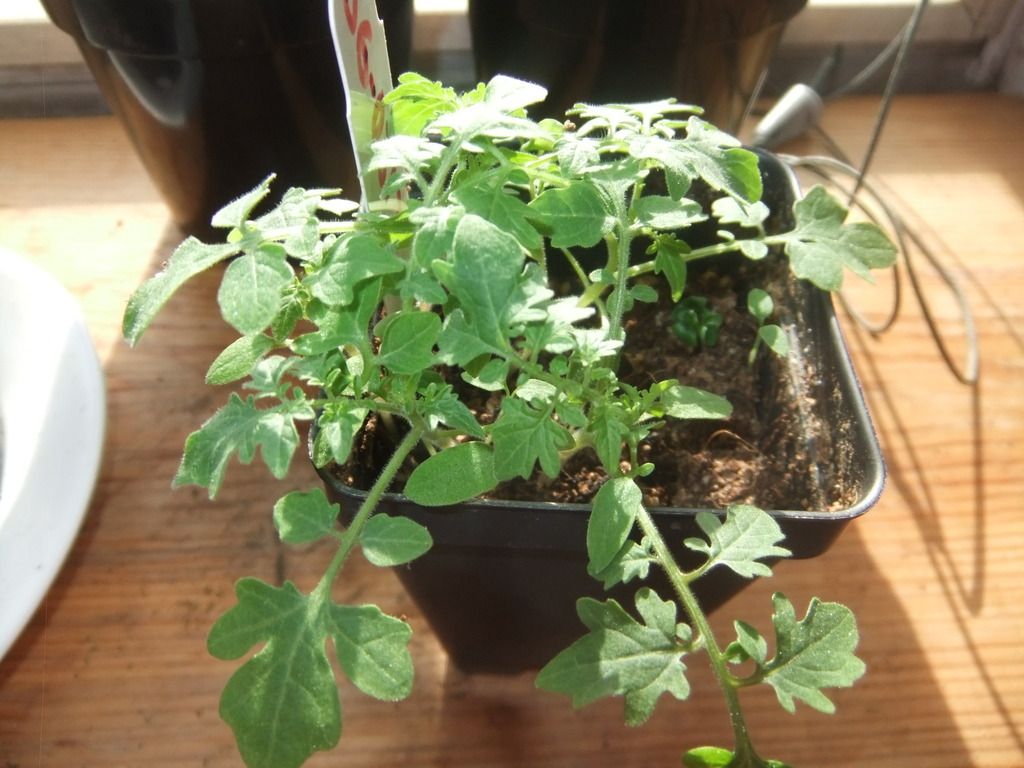 The Solanum galapagense have very interesting leaves. I really like them! Plus something interesting is that they have no smell! Not even traditional tomato leaf smell. So that's way cool! Very interesting. Excited for these. SG LA0317  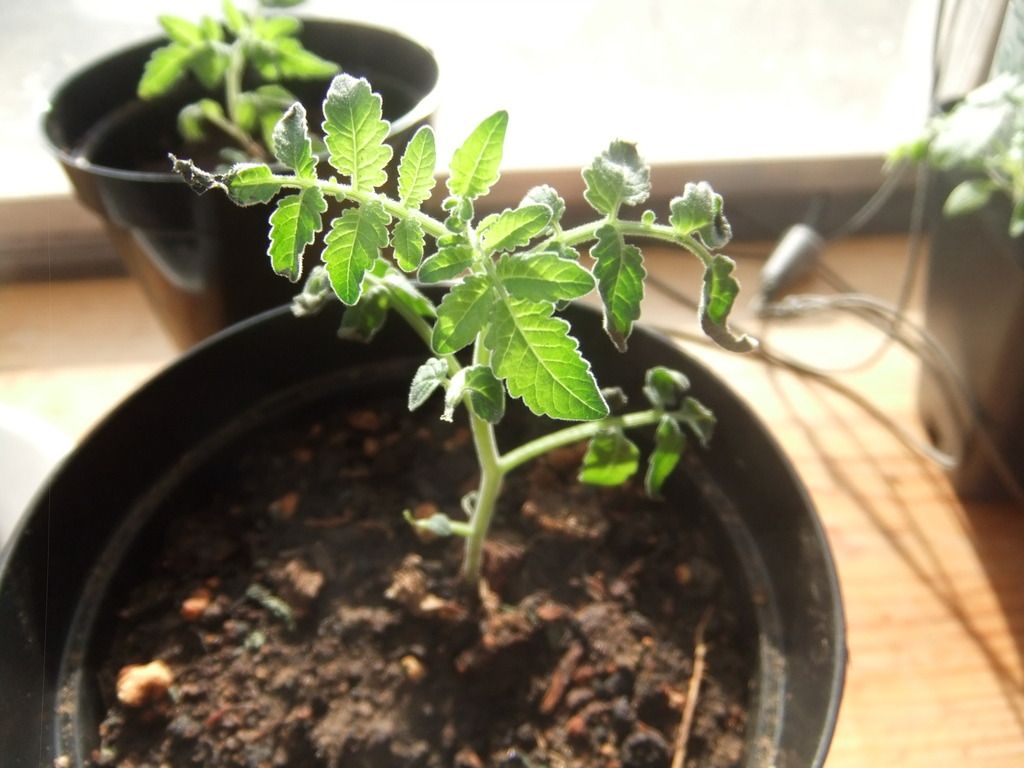 A few S. habrochaites seedlings as well. And an early Wx5 plant trimmed bonzai style with 4 tomatoes already. 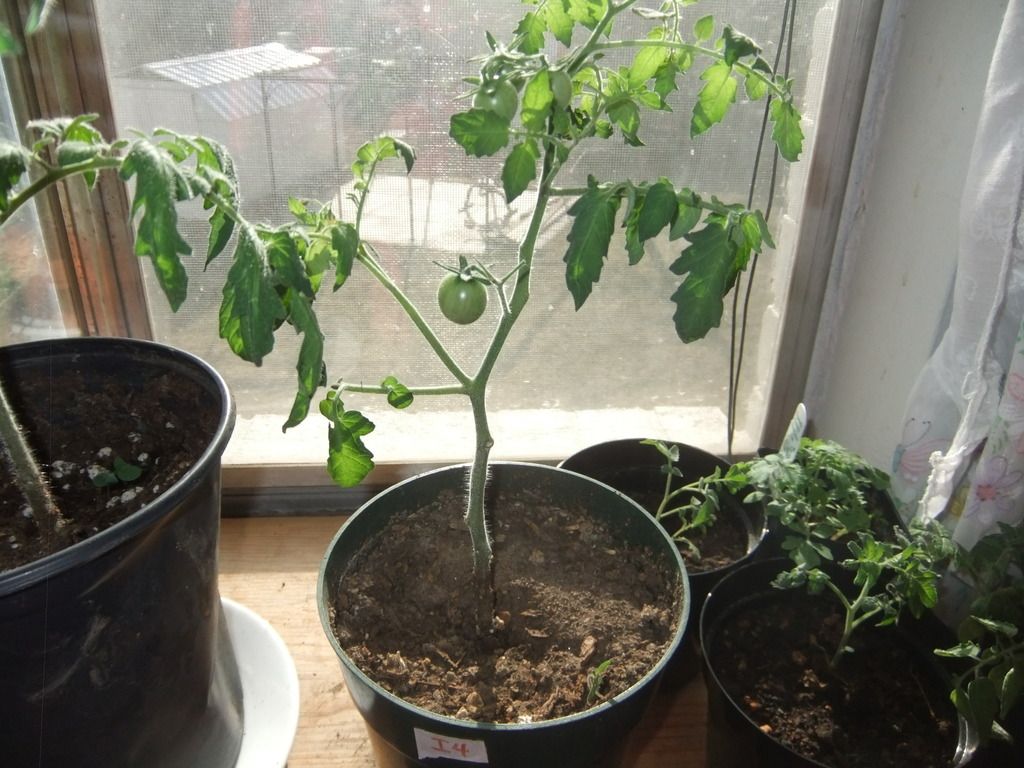 |
|
|
|
Post by keen101 (Biolumo / Andrew B.) on Mar 22, 2017 23:24:10 GMT -5
Photo 1: Solanum galapagense. I LOVE these leaves! 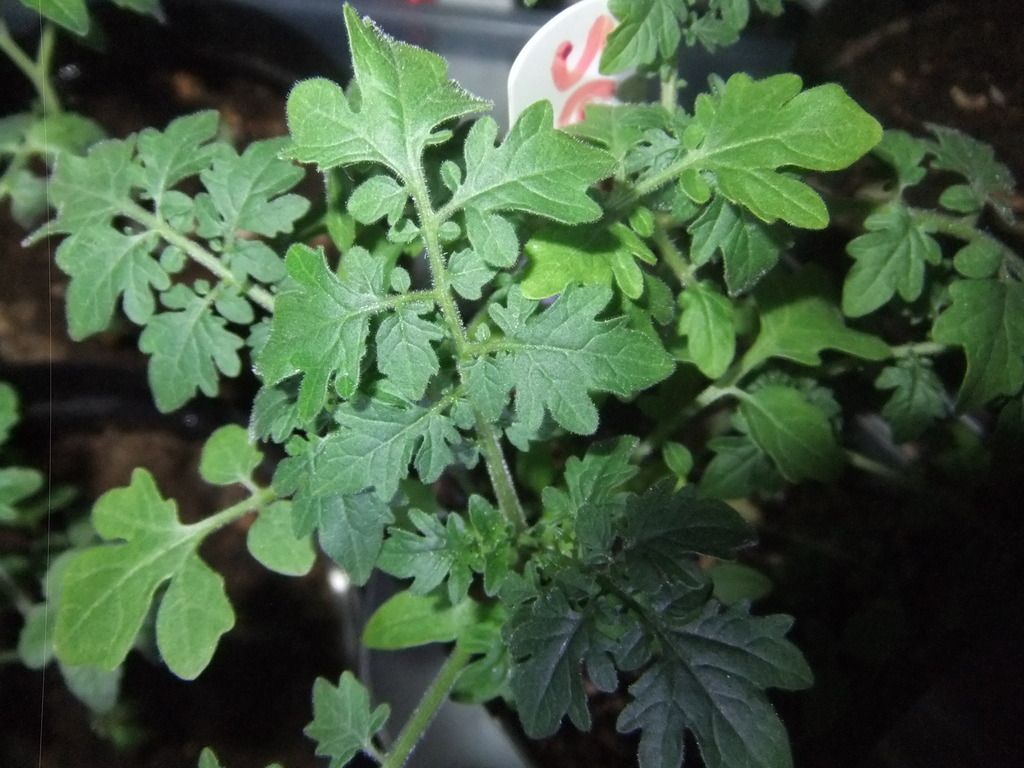 2. Solanum cheesmaniae 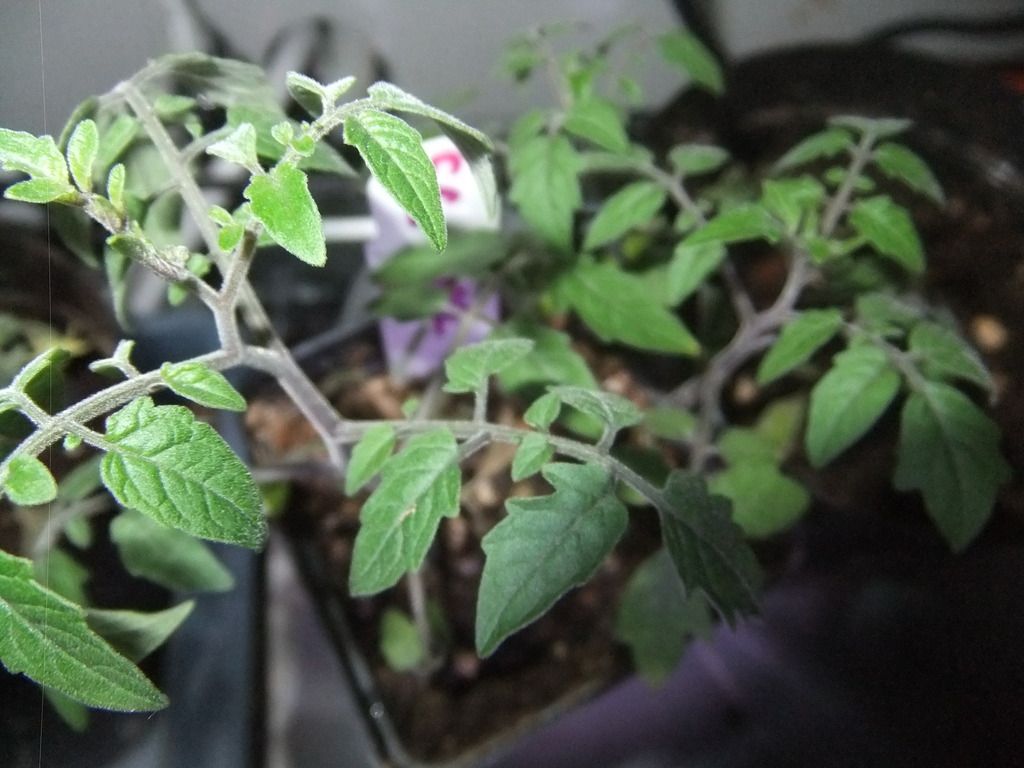 3. Solanum habrochaites 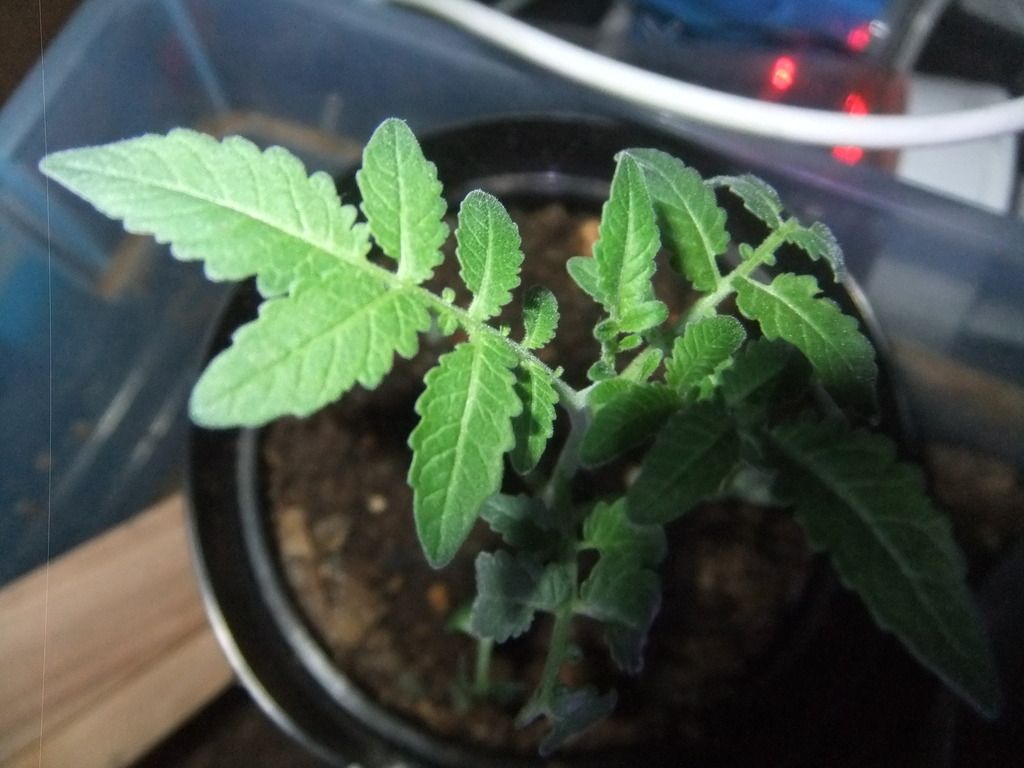 4. Misidentified as Wx5 but really Solanum cheesmaniae?  5. Regular Tomato for comparison. I believe this is the variety known as "Anasazi" that i got from Boulder, CO. 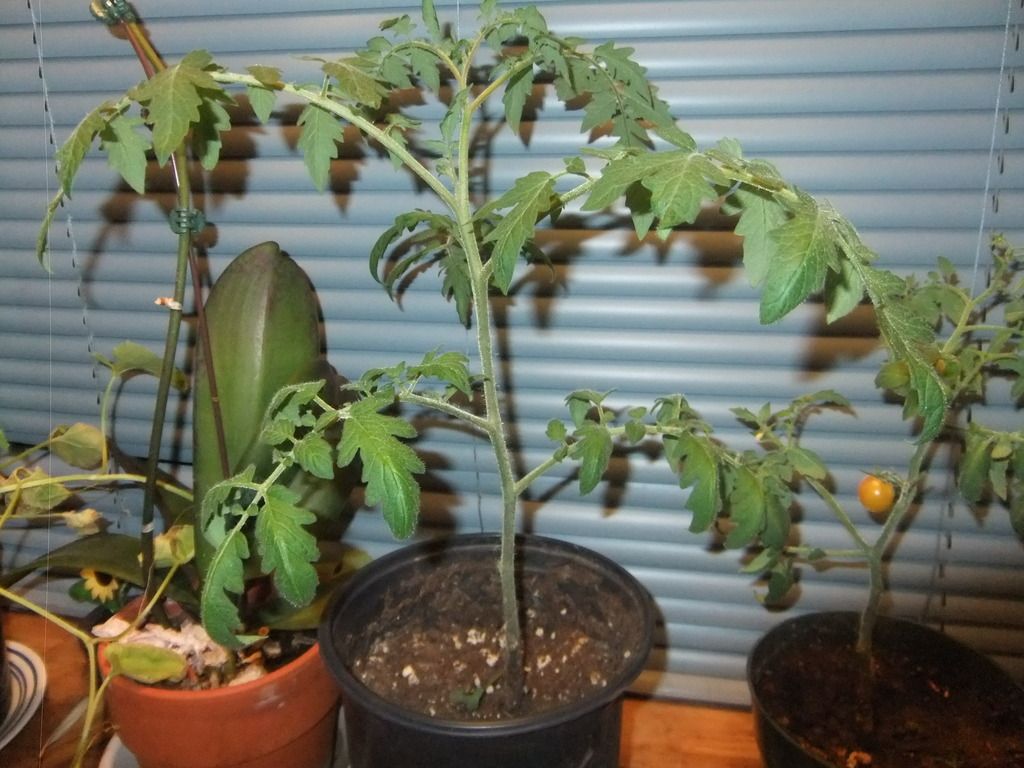 |
|
|
|
Post by Joseph Lofthouse on Mar 23, 2017 11:24:40 GMT -5
4. Misidentified as Wx5 but really Solanum cheesmaniae? Looks to me like WildX-10, WxO, which I am currently calling Wild Orange. Sweetest tomato I grow. It's also recently descended from wild ancestors.  keen101 (Biolumo / Andrew B.) keen101 (Biolumo / Andrew B.): Thanks for the S. cheesmanii seeds. I dumped all my remaining seed into a common lot. Some of them actually germinated this year.  |
|
|
|
Post by keen101 (Biolumo / Andrew B.) on Mar 26, 2017 10:06:50 GMT -5
Thanks Joseph, I'll watch it closely to see if it turns orange, but if it doesn't i will conclude that it really is some strain of S. Cheesmaniae or hybrid.
|
|